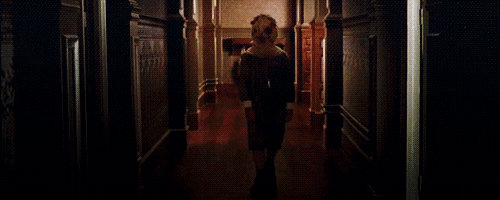IT was good, this is better.
2017 has been a great year for horror with Get Out, Raw, It Comes at Night, Annabelle: Creation and Mother! all earning positive reviews, but one film has eclipsed them all in terms of buzz and box-office takings, IT.
Andrés Muschietti’s adaptation of Stephen King’s beloved novel has already taken $200m worldwide – that’s the biggest opening weekend ever for any horror and the largest September opening of all-time – and this magnificent achievement is fully deserved because the new adaptation of IT is a very good film.
At present, Muschietti’s adaptation has a rating of 86% on Rotten Tomatoes and fans will be absolutely delighted to hear that Part Two is in development. Hell, The Rock has even said that it’s one of his favourite films of all-time. Who are we to argue with The Rock?!?!
If you’ve seen IT then you’ll know what it’s terrifying strengths are, but after leaving the cinema, I couldn’t help but compare it to another horror that also features an eclectic group of haunted, terrified and downtrodden children, J. A. Bayona’s superb debut, The Orphanage.

In a way, both horrors represent two different sides of the same coin and they even share a dark fairytale aesthetic.
While The Orphanage taps into the profound yet unacknowledged fear that adults have towards children, IT: Part One – The Losers Club deals with the fears of growing up, childhood trauma, the nature of fear itself and crucially, the apathy that adults have towards the horrific events that are unfolding in Derry, Maine.
This being said, both films couldn’t be any more different in terms of their tone and style.
Released in 2008, The Orphanage is an old-school gothic frightener about a long-abandoned orphanage that has a very troubled past.
As a child, young orphan Laura spent her formative years being cared for by the staff of a large orphanage that’s located by the Spanish seaside. These were some of the happiest years of Laura’s life, and now, 30 years later, the former charge returns to the dilapidated institution with her husband, Carlos, and their seven-year-old son, Simon, to reopen the orphanage as a facility for disabled children.
However, things are not as the seem.

A dark and ominous presence haunts the darkened hallways of this silent, stately manor. When Simon’s behaviour begins to grow increasingly bizarre and malicious, Laura and Carlos start to suspect that the mysterious surroundings have awoken something ominous in the young boy’s imagination. Is Simon’s bizarre behaviour a desperate bid to get more attention from his distracted parents, or is there something more sinister behind the conversations that he’s having with his newfound imaginary friend, Tomas?
As things get darker and more terrifying, Laura is drawn into this disturbing web as repressed and horrific memories of the past come flooding back.
What exactly is the terrible secret that’s lurking in this old house?
If you’re a horror fan then you’ll be delighted to know that The Orphanage has all the regular traits like creepy kids, creeky furniture and juddery Super 8 films.
In terms of comparison, Bayona’s film is more like The Others than the gorefest of Saw, but despite the increasing tension and scares, The Orphanage does have a very moving message.
Since its release, The Orphanage has gone down as a cult-classic and with a Rotten Tomatoes rating of 87%, it ranks as one of the greatest horrors of all-time.
Both films are completely different, but if you’re looking for another group of kids to scare the crap out of you after watching IT, we recommend The Orphanage.
Here’s what the critics said:
Rolling Stone – “A frightening movie that earns its scares the hard way, generating unbearable tension through artful technique instead of computer.”
Empire – “A good old-fashioned horror in the best possible way, this is a beautifully told, terrifying ghost story that lingers with you long after the shivers have stopped.”
TIME – “There will be moments so tense, you’ll need to calm yourself by saying, ‘It’s only a movie!’
The New Yorker – “You exit the cinema in a fever of melancholia, wondering how long it will take you to shed the sensation of alarm. The film is less of a shocker than an adventure in anxiety, testing and twisting some of the classic studies in infantile curiosity.”
Turn the lights off and watch this.
https://www.youtube.com/watch?v=02mbaN7ozJ4





























